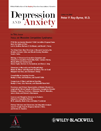Coercive and disruptive behaviors in pediatric obsessive–compulsive disorder
Abstract
Background: This study explored the nature of disruptive and coercive behaviors in pediatric obsessive–compulsive disorder (OCD). Method: Thirty children with OCD and a disruptive behavior disorder (DBD) were compared to 30 children with DBD alone using the Child Behavior Checklist and a novel 18-item questionnaire focused on distinctive coercive and disruptive behaviors seen in pediatric OCD (CD-POC). Results: Although youth with DBD alone had higher ratings of Externalizing Behaviors on the CBCL compared to the youth with OCD + DBD, their ratings on the CB-POC scale were lower. For example, 83% of OCD + DBD parents reported that their child “Imposes rules or behaviors on others due to tactile or other sensitivity and reacts to disobedience with rage or violence (e.g. forbids certain sounds, demands specific temperature settings)” compared to 23% of the parents of youth with DBD alone. Other highly discriminating behaviors included: “Demands special ‘cuddling’ or ritualized contact without regard for the will of others” and “Forbids the use of objects in his/her vicinity because of feelings of fear or disgust (e.g. knives, scissors, creams).” Total scores on the CD-POC were also correlated with OCD severity (P<.01). Conclusion: The results suggest that the nature of DBD in pediatric OCD may be distinctive and worthy of further study. Depression and Anxiety, 2011.© 2011 Wiley-Liss, Inc.




